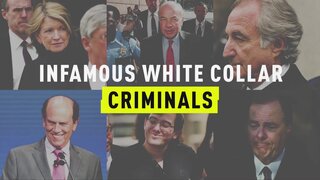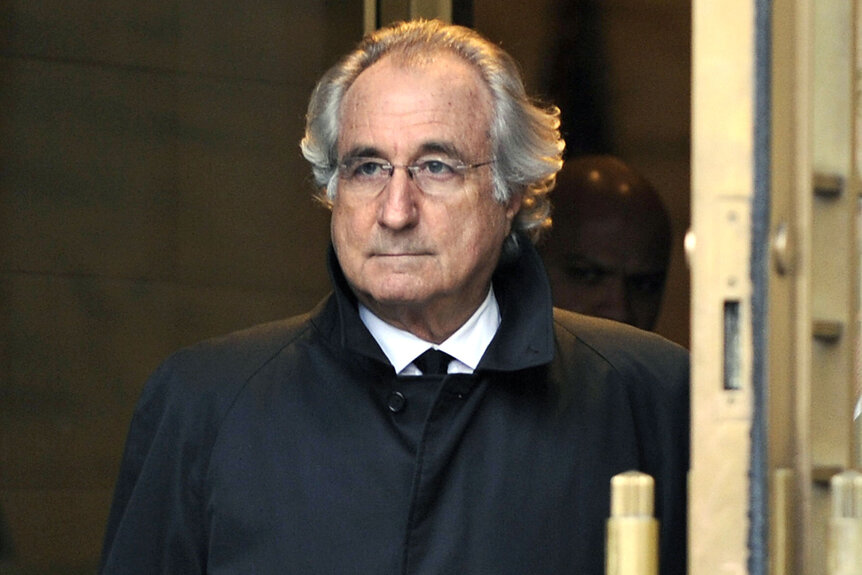Create a free profile to get unlimited access to exclusive videos, breaking news, sweepstakes, and more!
How Bernie Madoff Eluded Government Agencies For Years While Running Largest Ponzi Scheme In U.S.
A closer look into how one of the biggest con artists the world has ever seen managed to evade authorities, and draw no attention from his investors, all while losing more than an estimated $50 billion.

He was arguably one of the biggest con artists in the world — ruining the lives of thousands of people — while masterminding the largest Ponzi scheme ever in the United States. His crimes were called “extraordinarily evil” by the judge who sentenced him, and a “stunning fraud that appears to be of epic proportions” by the Securities and Exchange Commission (SEC).
How did Bernie Madoff ruin the financial fortunes of so many, and how did his crimes go undetected for so long — ultimately only exposed by Madoff himself? These are questions many are still trying to come to grips with to this day.
The former Nasdaq chairman was arrested and charged with securities fraud a little over 14 years ago. The then 70-year-old operated an investment advisory business — which was separate from Bernard L. Madoff Investment Securities, a securities broker dealer — according to the Department of Justice.
RELATED: Bernie Madoff, Infamous Ponzi Scheme Architect, Dies In Prison At 82
“We are alleging a massive fraud — both in terms of scope and duration,” Linda Chatman Thomsen, Director of the SEC’s Division of Enforcement, said in a U.S. Securities and Exchange Commission press release on Dec. 11, 2008.
Madoff told his senior employees — including his sons Mark and Andrew, who notified authorities — that his advisory business was a fraud, that he was “finished,” had “absolutely nothing,” that “it’s all just one big lie” and even that it was “basically a giant Ponzi scheme,” according to the SEC.
Madoff admitted that for years he’d been paying returns to certain investors out of the principal received from other, different investors — estimating the losses from this fraud were at least $50 billion, the SEC said. According to regulatory filings, the Madoff firm had more than $17 billion in assets under management as of the beginning of 2008, but “it appears that virtually all assets of the advisory business are missing,” the SEC said.
When clients moved to withdraw their investments at the start of the 2008 financial crisis, the Ponzi scheme fell apart as the scheme required new investments to stay afloat.
One man told NPR the SEC simply failed to do the math, and his warnings of Madoff were largely ignored by securities regulators.
Harry Markopolos is a financial analyst-turned-investigator who wrote about his crusade to take down Madoff in his 2011 book, “No One Would Listen: A True Financial Thriller.” Markopolos explained in his book that he realized Madoff was running a Ponzi scheme, nearly a decade before it was uncovered, while working as an options trader at a Boston financial firm that was losing customers to Madoff, according to NPR.
“It’s hard to compete with a Ponzi scammer, because all he has to do is type his performances into the computer,” Markopolos said to NPR. “He doesn’t have to manage his returns according to the market, whereas I had to.”
Markopolos and his team analyzed publicly available information about Madoff's network of "feeder funds" from offshore companies, NPR reported. The team pretended they wanted to invest in these funds.
"His strategy as depicted would have trouble beating a zero return, and his performance chart went up at a 45-degree line — that line doesn't exist in finance, it only exists in geometry classes," Markpolos said to NPR.
Madoff not only conned his investors, but the lead government regulator charged with protecting investors as well.
“They bought into the story. They bought into his patina of respectability that he was a market maker — one of the largest on the street," Markopolos told NPR. "They thought he was a Wall Street titan, and they had no reason to doubt him. But they didn't know that math like I did."
“Credible information, on multiple occasions, was brought to the agency, but at no point were referred for formal investigation,” Christopher Cox, chairman of the SEC, told CNN in Dec. 2008, prompting an internal investigation as to how Madoff’s actions went unchecked for at least a decade.
By all accounts, the financier seemed legit. Madoff touted A-list celebrity clients, was chairman of the Nasdaq Stock Market for three years and even sat on SEC advisory committees — all while using phony account statements to clients to run his Ponzi scheme.
“It never entered the SEC’s mind that it was a Ponzi scheme,” Madoff said in a prison interview with the SEC inspector general, reported by Fortune. Madoff alleged agency examiners “never asked” for basic records to corroborate his business.
A 2009 report by the inspector general detailed how SEC investigations of Madoff were mismanaged, outlining disputes among inspection staffers over the findings, a lack of communication among SEC officials in various cities and repeated failures to act on legitimate complaints from outside the agency, Fortune reported. An internal review by the Financial Industry Regulatory Authority, the securities industry’s regulator, also found a breakdown in not figuring out Madoff’s fraud.
The SEC made rule changes starting in 2009 to try and prevent this level of fraud from ever happening again. This included changes to how the agency carries out inspections of investment advisers and brokerage firms, as well as steps to provide better protection of customers’ assets against theft and abuse, Fortune reported. The agency also started a new electronic system for taking tips and complaints to better help detect fraud.
The SEC disciplined eight of its employees over their handling of the Madoff case, but did not fire anyone, the Washington Post reported in November 2011.
Just last month, the trustee for the liquidation of Madoff’s investment firm announced the 14th distribution to victims of his Ponzi scheme, bringing the total amount restored to more than $14 billion. The trustee signaled there would be more recoveries in 2023, according to ABC News.
Madoff died of natural causes in April 2021, while being housed at the Federal Medical Center in Butner, North Carolina, at the age of 82, according to Oxygen.com. He was serving a 150-year prison term.
Even in death, Madoff continues to loom large over the finance industry. FTX founder Sam Bankman-Fried was arrested and charged with federal crimes in December over his cryptocurrency exchange, Yahoo reported — the latest in a line of white-collar executives to be accused of bad money management and business practices — drawing comparisons to Madoff.
Fox Business senior correspondent Charlie Gasparino discussed the similarities on the network in December, suggesting Bankman-Fried committed the fraud because he was trapped into the greed of others.
“It really is theft, it’s not that much different than Bernie Madoff. He reminds me of Bernie Madoff in a weird way,” Gasparino said on Fox News. “[They] all have this weird disengagement from reality. I mean Madoff, when I interviewed him, he was in prison at the time, ‘You know I was kind of forced into it, my clients demanded it’ and this guy’s doing the same thing. There’s this disengagement and in order to be a sociopath and rip people off, you need to not have some feeling, there has to be something in your brain that keeps you focused on the crime and on the misdeed. And you see it in Madoff…and you see it in this guy.”
To learn more about this case and others like it, watch "American Greed," Tuesdays at 10 p.m. ET on CNBC.















